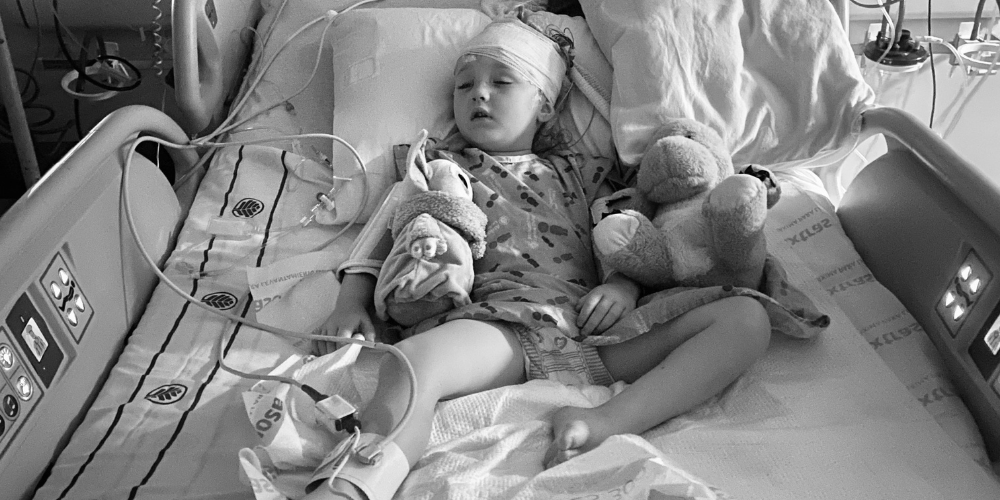Neuroblastoma Facts
Neuroblastoma is a very rare type of cancerous tumor that originates from immature nerve cells called neuroblasts. While it can occur at any age, it’s most commonly diagnosed in early childhood.
This cancer can develop in various regions of the body including the chest, spine, spinal cord and abdomen, but it frequently originates in the adrenal glands located on top of the kidneys.
In some instances, neuroblastoma can be inherited, meaning it’s passed down through families.
Neuroblastoma is considered a relatively rare type of cancer, accounting for approximately 7-10% of all childhood cancers. In the United States, about 800 new cases are diagnosed each year.
- Neuroblastoma occurs slightly more frequently in boys than in girls.
- Most children with neuroblastoma are diagnosed before the age of 5.
- It is particularly prevalent in infants, with around 50% of all cases occurring in children younger than 1 year old.
Neuroblastoma is usually discovered when a tumor or lump appears. Very rarely, the discovery is made using fetal ultrasound. Symptoms include:
- A hard, painless mass or lump in the neck, abdomen, or other areas of the body.
- Stomach pain or discomfort
- Irritability or changes in behavior, particularly in young children who may not be able to communicate effectively
- Decreased appetite or refusal to eat
- Weakness or difficulty moving legs
It’s important to note that these symptoms can also be caused by conditions other than neuroblastoma, and if there are concerns about potential symptoms of neuroblastoma, it’s crucial to consult a healthcare provider for proper evaluation and diagnosis.
Treatment for neuroblastoma varies depending on factors such as the patient’s age, the extent of the disease spread and the specific characteristics of the tumor.
Common treatment approaches include:
- If the tumor has not spread extensively, surgical removal may be performed. Complete surgical resection of the tumor offers the best chance of cure in localized disease.
- Chemotherapy is often used to shrink tumors before surgery, especially if the tumor affects the spinal cord or is inoperable. Chemotherapy may involve the administration of powerful drugs either intravenously or orally.
- Radiation therapy utilizes high-energy X-rays or other types of radiation to destroy cancer cells or inhibit their growth. It may be used in combination with chemotherapy. External radiation therapy involves directing radiation from machines outside the body, while internal radiation therapy delivers radiation directly into or near the tumor using needles, seeds or catheters.
- Patients with high-risk neuroblastoma, where the tumor is difficult to remove surgically and has spread extensively, may require more aggressive treatment. This can include higher doses of chemotherapy, immunotherapy and stem cell transplant.
- Stem cell transplant involves replacing blood-forming cells in the bone marrow that have been destroyed by chemotherapy and/or radiation therapy. This procedure may use the patient’s own stem cells or stem cells from a donor’s blood or bone marrow.
- Immunotherapy involves stimulating the body’s immune system to recognize and attack cancer cells. An antibody called GD2, along with GM-CSF and Il-2, is commonly used in immunotherapy for neuroblastoma, often administered at the end of therapy.
Neuroblastoma survival rates can vary depending on factors such as the patient’s age, the extent of the disease and the risk category.
- Low-risk patients: Patients classified as low-risk typically have a favorable prognosis, with approximately 95% of them surviving five years or more after diagnosis.
- Moderate-risk patients: For patients classified as moderate-risk, the five-year survival rate typically falls between 80-90%. While still relatively high, this category may indicate a slightly more aggressive form of the disease compared to low-risk cases.
- High-risk patients: High-risk patients face the most challenging prognosis, with approximately 50% surviving five years or more after diagnosis. This category often includes patients with tumors that are difficult to surgically remove and have spread extensively.
- Generally, infants have a better chance than older children of remaining free of neuroblastoma after treatment.




